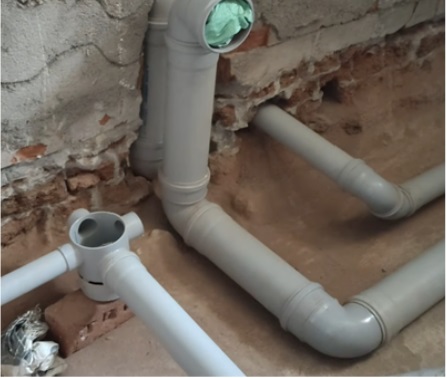
Bathroom Waterproofing
Basics Of Bathroom Waterproofing , Important Tips To Effectively Waterproof Toilet Block.
Bathroom waterproofing is a vital aspect of almost all construction and bathroom renovation projects. It is a crucial step necessary for preventing water penetration and damage in bathrooms and adjoining rooms.
Bathrooms are high-moisture areas due to regular water usage, and without proper waterproofing measures, water can seep into the building’s structure, leading to various problems such as mould growth, deterioration of surfaces, and structural damage.
The most important aspect of bathroom waterproofing is to prevent the leakage of water, primarily due to defective or damaged plumbing. Effective treatment in the bathroom can only help safely divert the water. However, if the leakage is high, the water pressure will eventually find its way out. Therefore, it is important to take every possible precaution to prevent any water leakage from the plumbing system.

The main objective and purpose of the waterproofing process is to create a protective layer that prevents water penetration into the building structure. Seepage and continuous exposure to water and moist conditions can adversely affect the building’s structural members.
Prolonged exposure to water and moist conditions can cause structural deterioration, mould growth, steel corrosion, a reduction in structural strength, and other related issues. Different methods and techniques are used for waterproofing, depending on the type of structure, the specific application, and the materials involved.
Bathroom Waterproofing Basic Knowledge
Important Bathroom Waterproofing Tips
Bathroom Waterproofing plays a crucial role in protecting building structures and creating a healthy living environment. It is an integral component of most construction projects.
This treatment is crucial for protecting building structure and adjoining rooms from damage caused due to leakage from the bathroom.
Let us take a look at some important tips that will surely help you in effectively waterproofing bathroom:
1. Prevention is better than cure
Waterproofing is a crucial step and a must for all bathrooms. However, waterproofing treatment has some limitations, and high leakage builds pressure that will find a way out. Therefore, preventive measures that can prevent leakage must be taken at the right stage.
Water seepage problems are difficult to diagnose and expensive to solve. Faulty plumbing, substandard plumbing material, and defect-prone plumbing are the root causes of most water seepage problems in the bathroom. A professional plumbing system can help you avert major leakage problems.
Bathroom Waterproofing Basic Knowledge
2. Hire a Professional
Bathroom waterproofing is a specialized task that requires expertise and knowledge of plumbing system as well as waterproofing. It is advisable to hire a professional contractor or waterproofing specialist who can diagnose the problem or assess your specific bathroom requirements, recommend suitable waterproofing methods, and ensure proper installation.
3. Select Quality Materials
Consider quality products as investment and invest in high-quality waterproofing materials and plumbing material. Waterproofing material includes waterproof membranes, sealants, caulking, grout, and backer boards. Using reliable and durable materials will provide better protection against water damage.
4. Address All Vulnerable Areas
Plumbing system must be tested under full water pressure before the installation of tiles. Pay attention to all vulnerable areas in your bathroom, including shower and bathtub areas, corners, joints, fixtures, and wall-floor interfaces. Ensure that these areas are properly waterproofed and sealed to prevent water intrusion.
5. Surface must be prepared and clean
Surface preparation is must before applying any waterproofing products. It must be thoroughly cleaned and prepared to ensure desirable results. Remove any dirt, grease, or existing coatings to ensure optimal adhesion of the waterproofing materials. Read the product instructions before its application.
6. Properly Slope the Shower Floor
Adequate gradient is must be maintained to avoid the problem of water stagnation on the floor. When waterproofing a shower area, ensure that the shower floor is properly sloped towards the drain. This helps water to flow efficiently and prevents standing water, reducing the risk of leaks and water damage.
Bathroom Waterproofing Basic Knowledge
7. Use Waterproof Backer Boards
In case of wooden structures, in wet areas, such as around showers and tubs, consider using waterproof backer boards ( BWP Standard ) instead of regular drywall. Waterproof backer boards are moisture-resistant and provide better protection against water damage.
8. Apply Sufficient Waterproofing Membrane
Ensure that the waterproofing membrane is applied in sufficient thickness and coverage. Follow the manufacturer’s instructions for proper application techniques and number of coats required.
9. Bathroom Floor Slab Treatment
For RCC and brick wall construction, the bathroom slab is provided a sunk portion to accommodate the plumbing and drainage line fixtures. This sunk portion must be waterproofed to ensure desired results. Use of special products to be added to cement and concrete can provide effective solution.


10. Pay Attention to Grout and Caulking
Properly seal the grout lines between tiles and the joints around fixtures using waterproof grout and high-quality caulk. Regularly inspect and maintain the grout and caulk to prevent water penetration.
11. Regular Maintenance and Inspections
Regular maintenance and Inspection of plumbing system and bathroom fixtures is must and problems noticed needs to be repaired. Conduct regular inspections of your bathroom to check for any signs of water damage, leaks, or deteriorating waterproofing. Address any issues promptly and perform routine maintenance to ensure the longevity of the waterproofing system.



